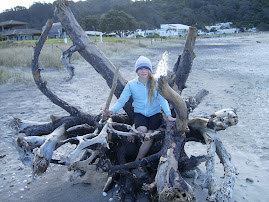


Feeding
Axolotls can be trained to take a variety of foods, such as worms, insects, freshwater shrimps, and tadpoles, or more convenient foods, such as raw beef meat (trimmed of all fat), liver, beef or lamb heart, and cat food. Mince is not suitable food because it contains preservatives. A popular method of feeding is to cut beef schnitzels into strips 0.5 centimetres × 3 centimetres, wrap them in meal-sized portions, and then freeze them until they are needed. However, if the axolotls mainly eat raw beef, give them a multivitamin supplement. Feeding
Axolotls can be trained to take a variety of foods, such as worms, insects, freshwater shrimps, and tadpoles, or more convenient foods, such as raw beef meat (trimmed of all fat), liver, beef or lamb heart, and cat food. Mince is not suitable food because it contains preservatives. A popular method of feeding is to cut beef schnitzels into strips 0.5 centimetres × 3 centimetres, wrap them in meal-sized portions, and then freeze them until they are needed. However, if the axolotls mainly eat raw beef, give them a multivitamin supplement.
Handling
Handle axolotls only when it is necessary, such as when cleaning the tank. They can be trapped with a shallow net and then gently grasped with one hand around their neck and shoulders and the other around their abdomen and hind legs. Do not squeeze them because they are easily damaged. When handling them, take care as they often thrash their tails around, which could damage them.
Health
Learn what is normal behaviour for axolotls and check them daily. Remember that because axolotls breathe through their skin, it must not dry out.
Incorrect environmental conditions and inadequate nutrition can make axolotls sick. To avoid this, feed them a variety of foods and maintain good-quality water.
Axolotls can also be affected by viruses and bacteria. At any sign of illness, or if you have questions, consult a veterinarian.
Beware of ammonia build-up, which is toxic. Ammonia is the main metabolic waste product of axolotls, and it also comes from decomposing food and other organic material. Increased levels of ammonia can also be caused by overcrowding, overfeeding, high water pH, warm water, and new tanks that haven't had time to develop good populations of nitrifying bacteria. Having a good water flow, changing water regularly, and removing uneaten food and faecal material can control ammonia levels.
Breeding
For the breeding process after the babies have gone solo into the tank we must take them into a different area into lots of 40, so then they arent eaten by the adult axolotles,we also want to remove any dead eggs they will show by brown marks on the outer egg ,you must change half of the water every day and make sure lots of oxygen space is there because they need much more oxygen than older axolotles because they are majouring ,it should take 14-18 days for the eggs to become into axolotles after the axolotles are born you mus seperate them again ,because if to many are in a tank they will fight and more will probably face death.
ashy-mashy
=)
Axolotls can be trained to take a variety of foods, such as worms, insects, freshwater shrimps, and tadpoles, or more convenient foods, such as raw beef meat (trimmed of all fat), liver, beef or lamb heart, and cat food. Mince is not suitable food because it contains preservatives. A popular method of feeding is to cut beef schnitzels into strips 0.5 centimetres × 3 centimetres, wrap them in meal-sized portions, and then freeze them until they are needed. However, if the axolotls mainly eat raw beef, give them a multivitamin supplement. Feeding
Axolotls can be trained to take a variety of foods, such as worms, insects, freshwater shrimps, and tadpoles, or more convenient foods, such as raw beef meat (trimmed of all fat), liver, beef or lamb heart, and cat food. Mince is not suitable food because it contains preservatives. A popular method of feeding is to cut beef schnitzels into strips 0.5 centimetres × 3 centimetres, wrap them in meal-sized portions, and then freeze them until they are needed. However, if the axolotls mainly eat raw beef, give them a multivitamin supplement.
Handling
Handle axolotls only when it is necessary, such as when cleaning the tank. They can be trapped with a shallow net and then gently grasped with one hand around their neck and shoulders and the other around their abdomen and hind legs. Do not squeeze them because they are easily damaged. When handling them, take care as they often thrash their tails around, which could damage them.
Health
Learn what is normal behaviour for axolotls and check them daily. Remember that because axolotls breathe through their skin, it must not dry out.
Incorrect environmental conditions and inadequate nutrition can make axolotls sick. To avoid this, feed them a variety of foods and maintain good-quality water.
Axolotls can also be affected by viruses and bacteria. At any sign of illness, or if you have questions, consult a veterinarian.
Beware of ammonia build-up, which is toxic. Ammonia is the main metabolic waste product of axolotls, and it also comes from decomposing food and other organic material. Increased levels of ammonia can also be caused by overcrowding, overfeeding, high water pH, warm water, and new tanks that haven't had time to develop good populations of nitrifying bacteria. Having a good water flow, changing water regularly, and removing uneaten food and faecal material can control ammonia levels.
Breeding
For the breeding process after the babies have gone solo into the tank we must take them into a different area into lots of 40, so then they arent eaten by the adult axolotles,we also want to remove any dead eggs they will show by brown marks on the outer egg ,you must change half of the water every day and make sure lots of oxygen space is there because they need much more oxygen than older axolotles because they are majouring ,it should take 14-18 days for the eggs to become into axolotles after the axolotles are born you mus seperate them again ,because if to many are in a tank they will fight and more will probably face death.
ashy-mashy
=)



2 comments:
great work, ashy mish mash!
you rpeated yourself in you rfirst pasrt, and the yellow is hard to read but the info is great! this should help us keep our new babies alive. thank you.
sorry for not using capitals - put my name on the board.
:-)
hi ashy mashy. on the title, I think you spelt axolotl's wrong. oh well!
thanks
bye
:-)
Post a Comment